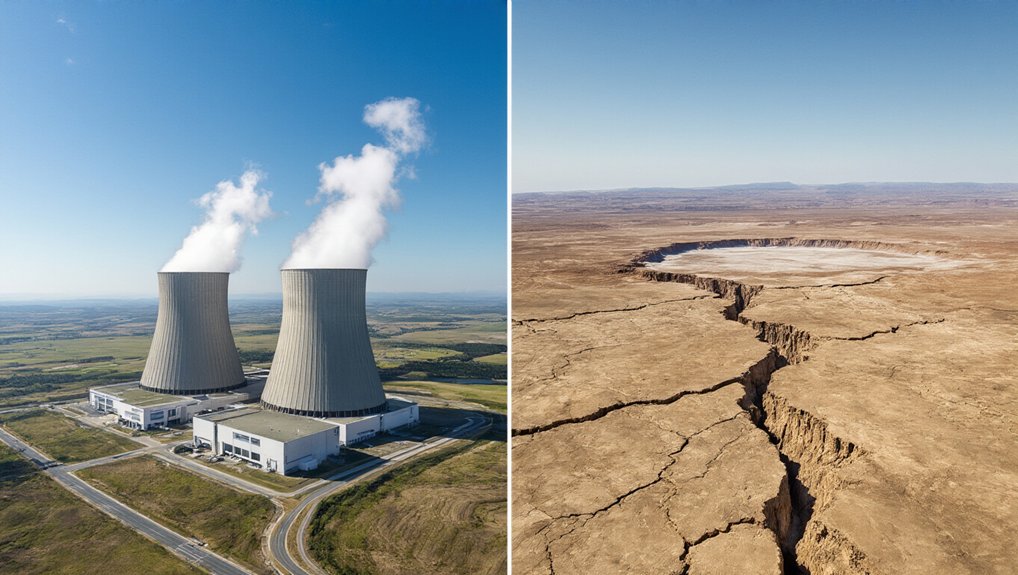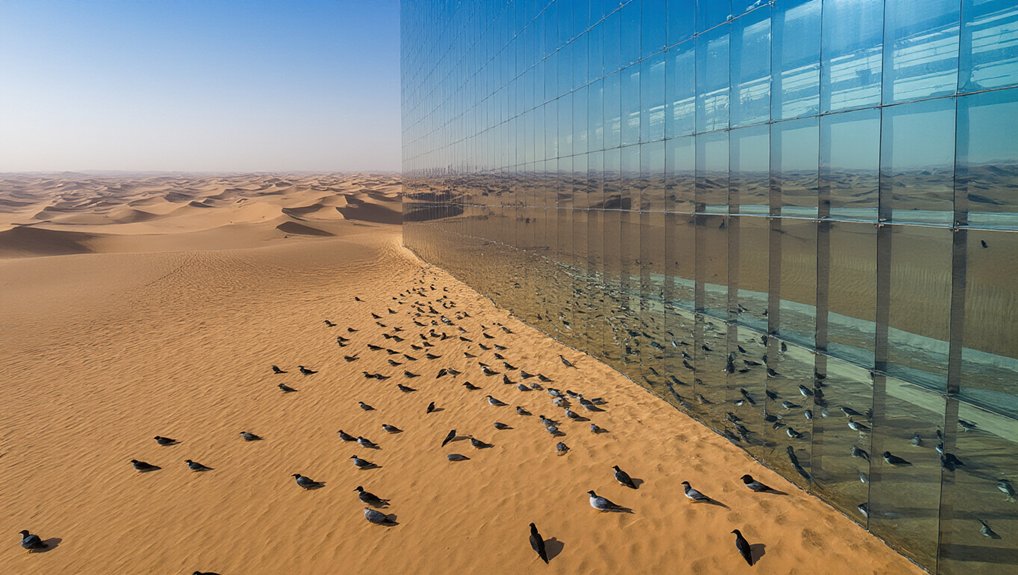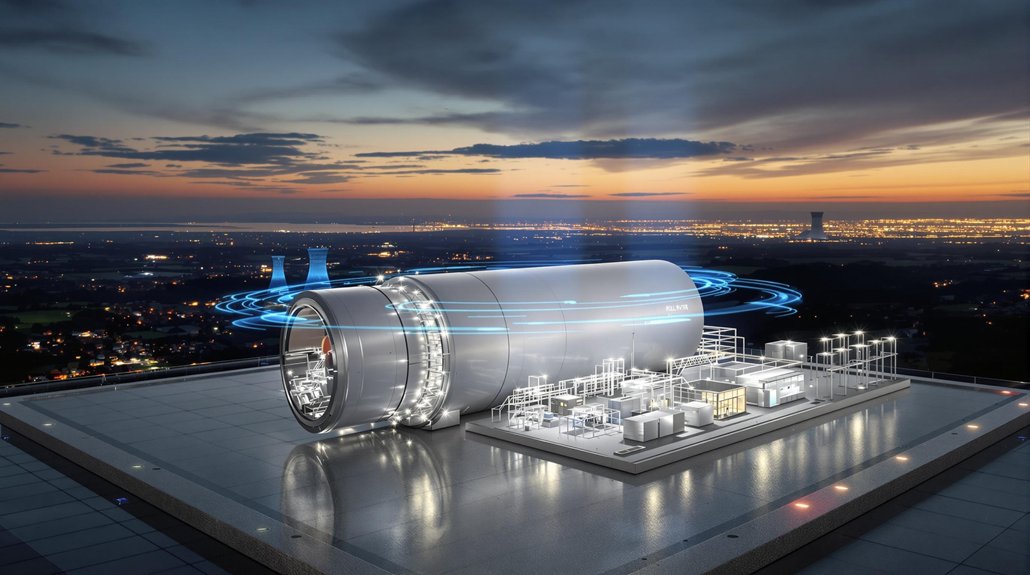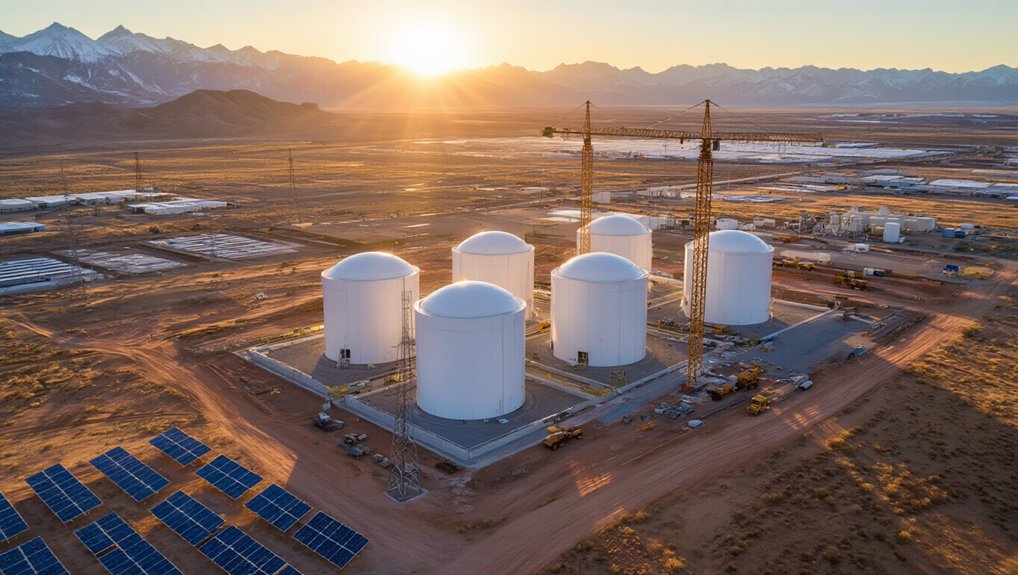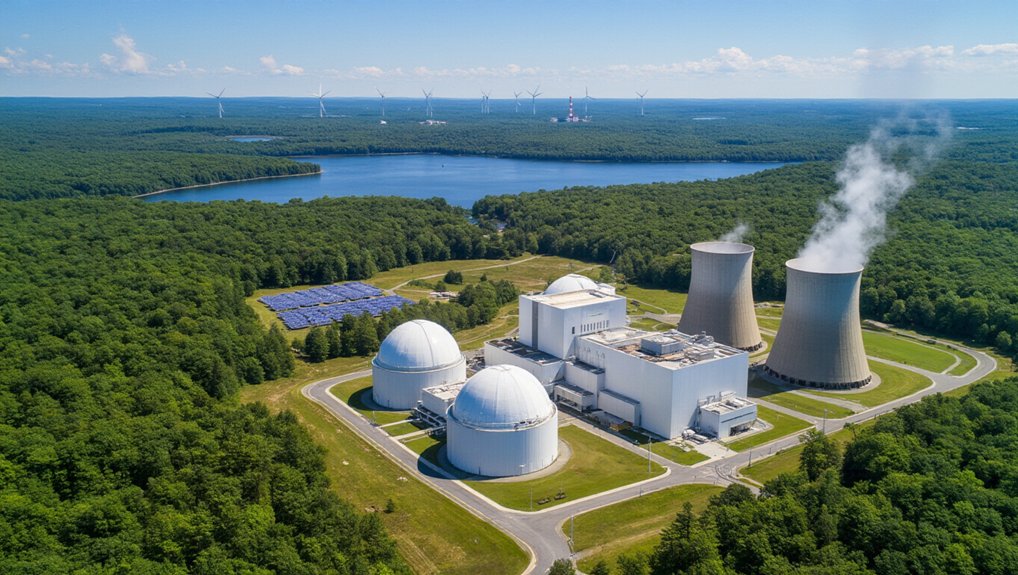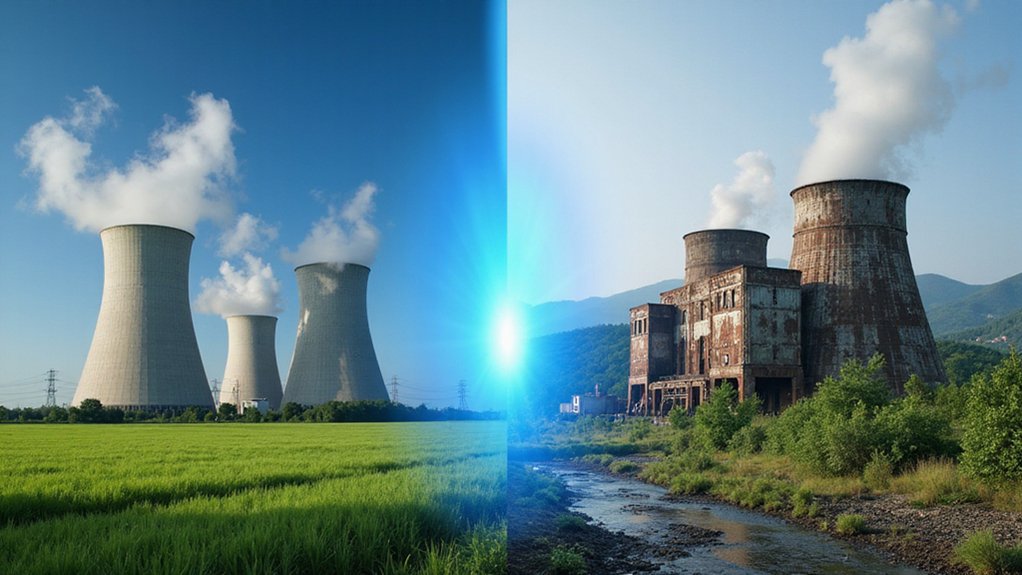Trump wants to quadruple America’s nuclear power capacity. From 100 gigawatts to 400 by 2050. That’s the plan, anyway. Reality might have other ideas.
The executive orders are flying fast. NRC licensing? Cut from years to 18 months. Renewals? One year, max. The president’s pen is working overtime to slash red tape and make nuclear great again. Even radiation limits are getting the axe – apparently the old ones were too strict. Who knew.
But here’s where geography crashes the party. America’s nuclear workforce isn’t scattered evenly across the fruited plain. They’re clustered in specific regions, along with the infrastructure that makes reactors actually work. You can’t just plop a reactor anywhere and call it a day.
Nuclear expertise clusters in specific regions. You can’t just plop reactors anywhere.
Water is a big deal. Nuclear plants are thirsty beasts, needing constant cooling. No reliable water source? No reactor. Simple as that.
Then there’s the earthquake problem. California might want more nuclear power, but fault lines don’t care about executive orders. Same goes for flood zones.
The grid is another headache. Remote areas perfect for reactors often have terrible electrical connections. What good is generating power if you can’t deliver it? Microreactors might help – these little nuclear batteries could support local grids without massive infrastructure. Maybe.
Public opposition remains brutal in many regions. NIMBY isn’t just an acronym; it’s a political force that’s killed plenty of nuclear projects before Trump took office. Environmental groups and locals with long memories of Three Mile Island don’t vanish because Washington says so.
The military angle is interesting. Defense installations will get advanced reactors within three years, supposedly. AI data centers at DOE sites are now “critical defense facilities” needing nuclear support. The Pentagon and Energy Department are cooking up new frameworks for military nuclear use.
Supply chains need massive expansion. Enrichment facilities, component manufacturing – America doesn’t have nearly enough. The policy calls for reducing foreign dependence while simultaneously needing to build everything from scratch. America’s reliance on foreign reactor designs has grown stark – 87% of new reactors since 2017 are based on technology from other countries.
Despite the ambitious nuclear vision, DOE has simultaneously cut fossil fuel R&D by millions while proposing billions in increased renewable funding. The Trump administration’s goals include 5 GW power uprates at existing plants and 10 new large reactors by 2030, but even existing facilities face geographic constraints for expansion. Geographic reality is stubborn. Executive orders can speed up paperwork, but they can’t move mountains, create water, or eliminate fault lines. Trump’s nuclear vision faces constraints that no amount of deregulation can wish away.
References
- https://world-nuclear-news.org/articles/trump-sets-out-aim-to-quadruple-us-nuclear-capacity
- https://www.whitehouse.gov/fact-sheets/2025/05/fact-sheet-president-donald-j-trump-directs-reform-of-the-nuclear-regulatory-commission/
- https://www.whitehouse.gov/fact-sheets/2025/05/fact-sheet-president-donald-j-trump-deploys-advanced-nuclear-reactor-technologies-for-national-security-f872/
- https://www.mcguirewoods.com/client-resources/alerts/2025/5/executive-orders-seek-resurgence-of-nuclear-power-in-u-s/
- https://judithcurry.com/2017/04/24/science-marchers-secretary-perrys-memo-and-bill-nyes-optimism/
